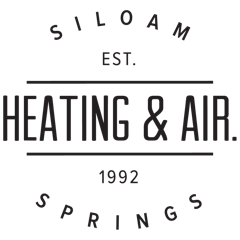
A furnace is usually a background player for your home, helping keep you warm across the cold winter months. It frequently isn't noticed until a malfunction appears.
One root cause might be that your furnace has a cracked heat exchanger. It’s a potentially dangerous issue, so it’s important to familiarize yourself with the signs of a cracked heat exchanger and what you can do if you suspect that may be the problem.
What Is a Heat Exchanger in a Furnace?
A heat exchanger transfers heat from the combustion chamber of your furnace to the air that moves throughout the air ducts. It generally accomplishes this through coils or tubes that heat up the air while acting as a barrier to keep byproducts created in the combustion chamber, called flue gasses, from getting out into your home.
Is a Cracked Heat Exchanger Dangerous?
Given its central role, it shouldn't come as a surprise that a cracked heat exchanger can be hazardous. Cracks in the heat exchanger can permit dangerous gasses – like carbon monoxide, which can be lethal – to circulate across your home.
For obvious reasons, do NOT turn on your heater if you think it has a cracked heat exchanger, as doing so could make the entire household sick. Contact an HVAC professional right away if you are worried your heating has a cracked heat exchanger that needs to be repaired.
Four Symptoms of a Cracked Heat Exchanger:
- Furnace shuts off: Cracks in the heat exchanger could cause your furnace to turn off.
- Odd Smells: If the air leaving your furnace has a powerful chemical smell, it could be an indicator that gas is leaking through cracks in your heat exchanger. These byproducts, which can smell like formaldehyde, are a common warning sign.
- Carbon monoxide alarm is triggered or you notice symptoms of poisoning: If a cracked heat exchanger is emitting carbon monoxide into your home, your carbon monoxide alarm should go off or family members could experience signs of carbon monoxide poisoning. Symptoms include headaches, dizziness, weakness, nausea, vomiting or feeling tired. If an alarm goes off or you feel unwell, get out of the home as soon as you can and then call for help.
- Soot: If you notice black sooty collecting on the exterior of your furnace, it’s an indication something may be seriously wrong.
What You Should Do if a Furnace Heat Exchanger is Cracked
If you worry your furnace has a cracked heat exchanger, call a professional experienced in furnace installation Siloam Springs right away so they can examine your system and, if required, start a furnace heat exchanger replacement. Costs will fluctuate depending on the situation, but estimates can roughly suggest $1,000 to $3,000.
Fortunately, the good news is that heat exchangers are regularly covered by the warranty. You should review the warranty paperwork on your furnace, as while the warranty won't always cover the entire cost of repairs, it could significantly reduce your bill.
How to Prevent a Cracked Heat Exchanger in Your Home
One of the most convenient ways to avoid problems in your furnace overall is with consistent furnace maintenance. Furnaces offer the most benefits when they work efficiently. Contacting a skilled professional to check your furnace for old parts, dirty filters and other likely problems can keep you from getting a big bill later on.
It’s also helpful to take a look at your furnace filters every few months – it’s recommended some filters be swapped out every 90 days or sooner if they are dirty or grimy. While the filters aren't a part of the heat exchanger itself, the strain of drawing air through a clogged filter makes the entire furnace work longer to accomplish its job. And the harder your furnace has to work, the more strain parts like the heat exchanger will experience.


